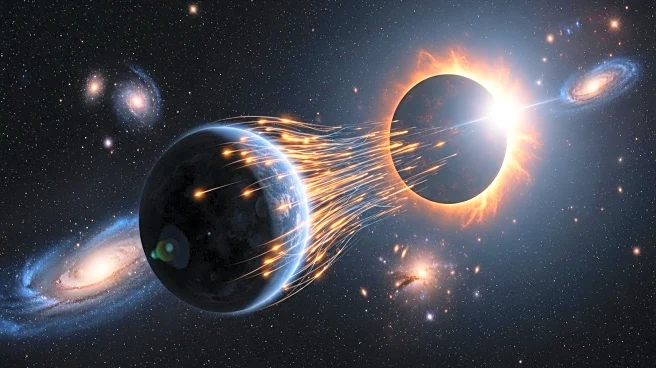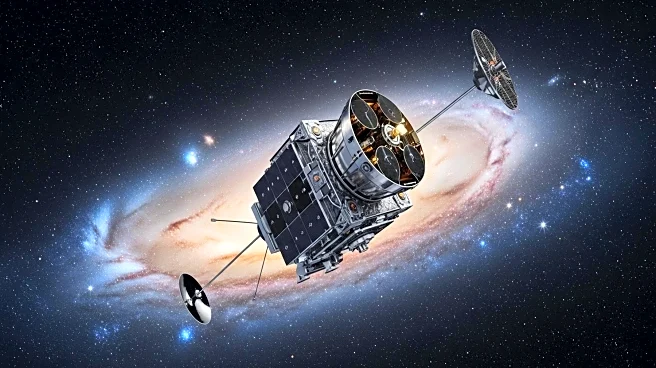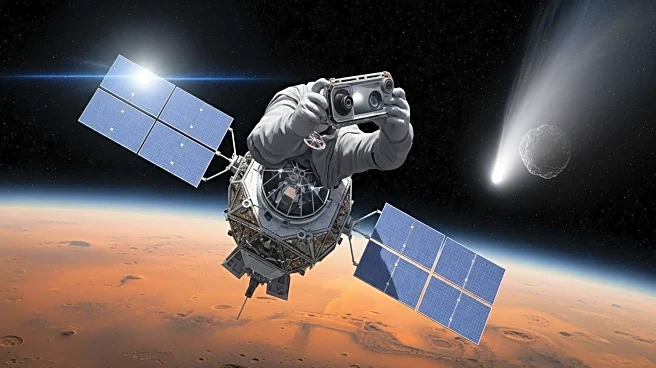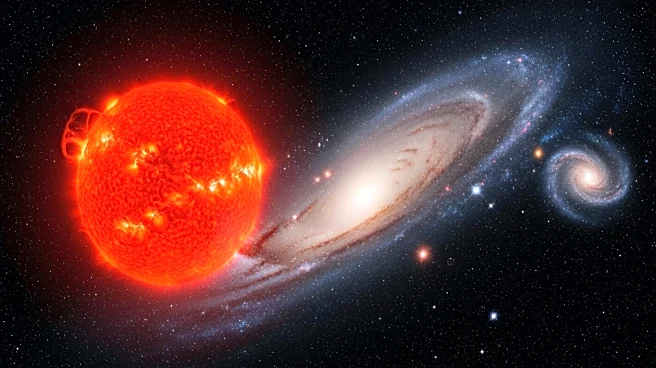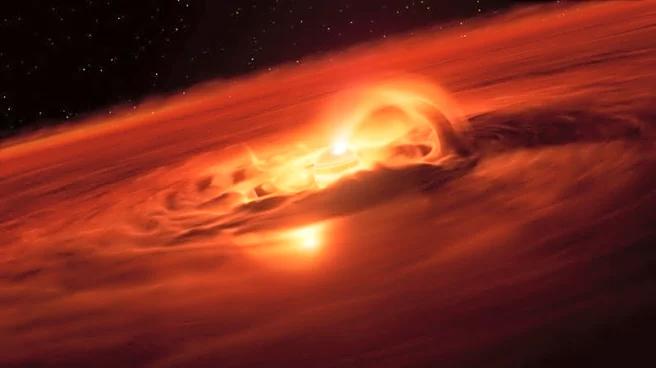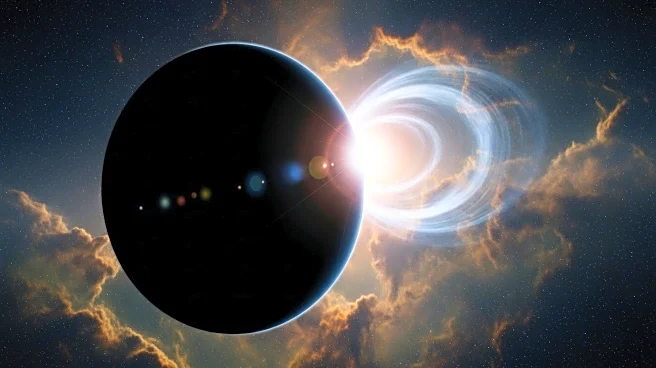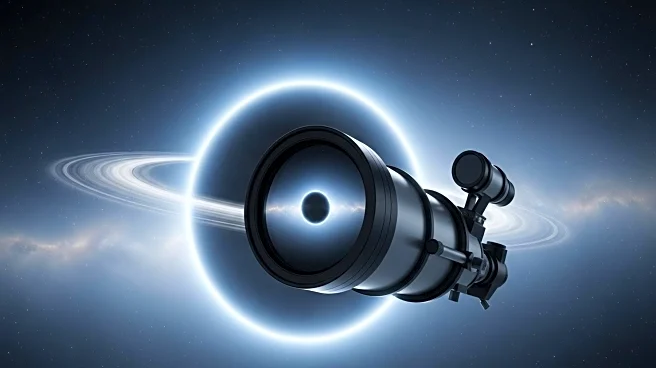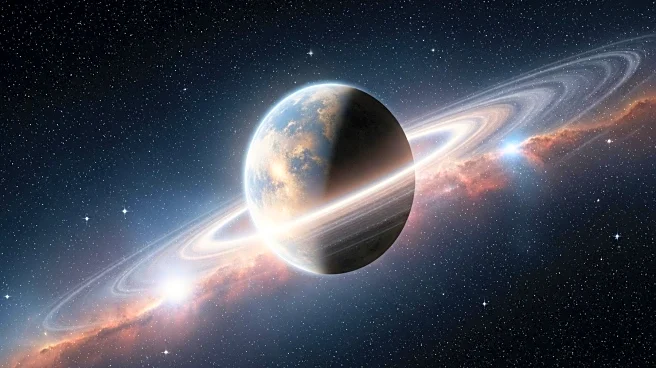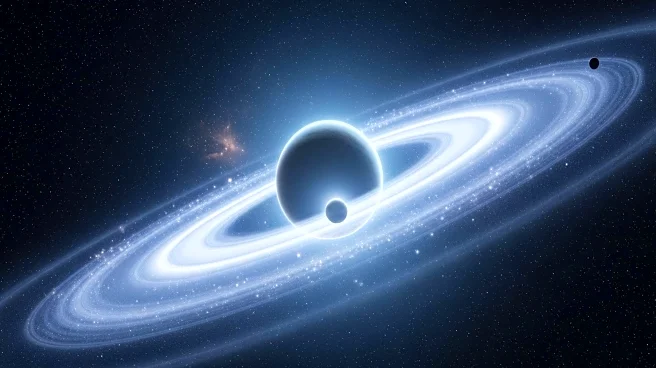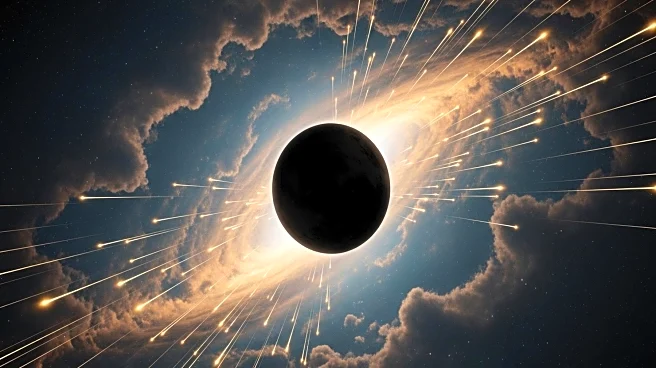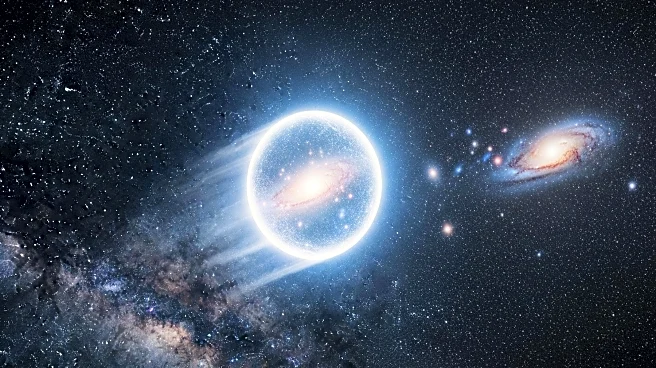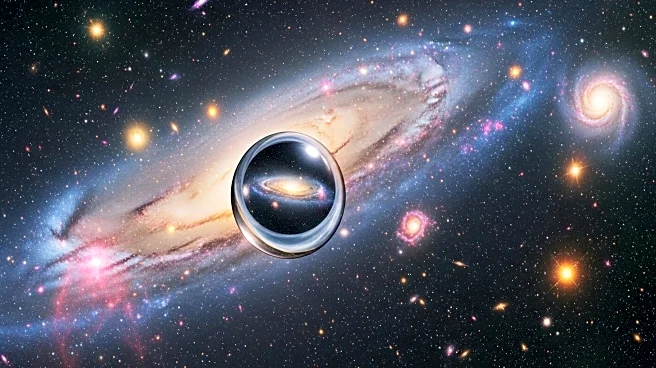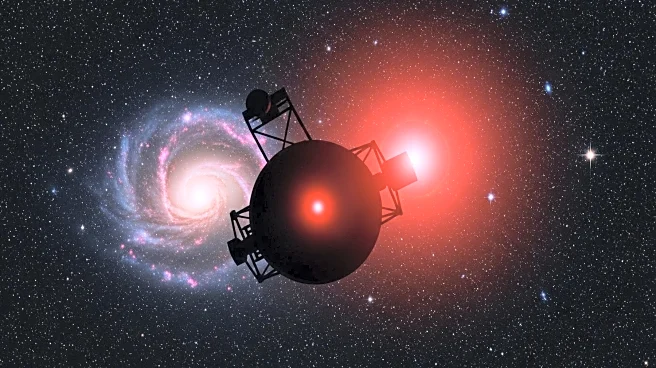What is the story about?
What's Happening?
NASA has confirmed the existence of a rogue planet, Cha 1107-7626, which is consuming material at an unprecedented rate of six billion tonnes per second. This discovery was made using advanced telescopes, including the European Southern Observatory's Very Large Telescope. The planet, located approximately 620 light-years away in the constellation Chamaeleon, is not orbiting a star and is undergoing rapid growth through a process known as accretion. This process involves the planet drawing in gas and dust from its surroundings, leading to dramatic bursts of material consumption. The findings challenge existing theories about planetary formation, suggesting that rogue planets may form in ways similar to stars, thus blurring the lines between these celestial categories.
Why It's Important?
The discovery of Cha 1107-7626's rapid growth is significant as it challenges traditional distinctions between stars and planets. The planet's behavior, including the presence of strong magnetic fields funneling material toward it, is typically associated with stars. This suggests that rogue planets might form through mechanisms similar to stellar formation, which could reshape our understanding of planetary evolution. The findings also highlight the dynamic nature of rogue planets, offering new insights into the diversity of planetary systems and the processes that govern their formation. As technology advances, further study of these celestial bodies could provide valuable information about the cosmos and the various ways in which celestial bodies come into existence.
What's Next?
Future research into rogue planets like Cha 1107-7626 is expected to advance with the development of new technologies, such as the European Southern Observatory's Extremely Large Telescope (ELT). This telescope will enhance the ability to detect and analyze rogue planets, potentially uncovering more about their formation and evolution. The study of planetary objects displaying star-like behavior is both exciting and challenging, and understanding the early stages of rogue planets could provide valuable insights into the diversity of planetary systems. As astronomers continue to explore these cosmic wanderers, they may discover new insights about planetary and stellar evolution.
Beyond the Headlines
The discovery of Cha 1107-7626 raises questions about the fundamental differences between stars and planets, challenging traditional categorizations based on formation processes and physical characteristics. The presence of water vapor and other chemical shifts during the accretion bursts further supports the idea that planetary and stellar formation processes may overlap. This blurring of boundaries invites further exploration into the formation of rogue planets and their potential overlap with stellar processes, offering a glimpse into the complex and fascinating world of these cosmic wanderers.
AI Generated Content
Do you find this article useful?
